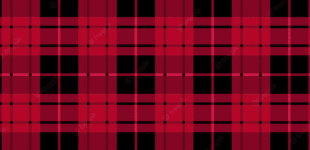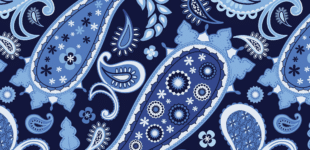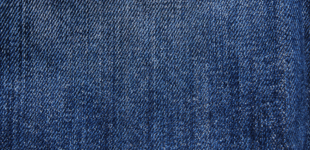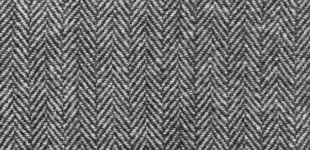What Color Is Your Data Fabric?
Imagine that you are painting a picture of the data that flows through your organization. You have a palette of colors to choose from, and each color represents a different aspect of your data. How would you paint this picture in your mind? Do you see your data as a single color, or a rainbow of colors? Do you see it as a solid color, or a defined pattern? Do you see it as bright or dark?
In April 2022, Appian released Data Fabric, a revolutionary virtual data layer that connects all of your existing systems and joins them together for improved process and application development. Data fabric is not just a boring technical term. It’s a way of thinking about how you use data in your organization and visualizing it like the questions in the introduction above.
Appian Data Fabric eliminates the need for costly and time-consuming data migrations, as it allows you to access data directly from where it lives, whether it’s on-premise, in the cloud, or in multi-cloud environments. It’s a way of connecting, managing, and securing your data across different systems and environments. It’s a way of making your data work for you, not against you.
In this blog, we put a creative spin on the array of patterns we see out there in the universe of enterprise data – reimagining them as fabric patterns with a distinct flair. So grab your brush and let’s get started!
Plaid: A mesh of multiple data sources

Plaid is a pattern of intersecting stripes of different colors, creating a complex and diverse fabric. Similarly, data fabric can connect and join data from various sources, such as legacy systems, data lakes, data warehouses, cloud platforms, and applications. With Appian’s Data Fabric, you can create a holistic view of your organization and its performance, and discover new relationships and patterns in your data.

Much like how plaid gives you the benefit of multiple colors without the need to sew, Appian Data Fabric eliminates the need for costly and time-consuming data migrations. It allows you to access data directly from where it lives, whether it’s on-premise, in the cloud, or in multi-cloud environments. Appian Data Fabric also provides a simplified data modeling experience that lets you create codeless data models and no-code integrations. You can also use low-code queries to sort and analyze data faster.
Paisley: A mix of different shapes and colors

Paisley is a pattern of curved shapes and swirls of different colors, creating a rich and intricate fabric. Similarly, data fabric can pull and combine data from various sources, such as databases, web services, applications, sensors, etc., and use the right one at the right time, depending on the context and the need.
Appian Data Fabric users evoking Paisley have achieved a flexible and dynamic way to access and use their business data. Appian Data Fabric allows you to create data sources that connect to any system or service that you want, and define the data schema and logic that you need. You can also create data syncs that automatically update your data sources based on events or schedules. You can then use Appian’s low-code expressions and functions to query and manipulate your data sources as you wish.
With Appian Data Fabric, you can create a paisley data fabric that adapts to your changing needs and preferences. You can use different data sources for different purposes, such as reporting, analysis, automation, etc. You can also switch between data sources easily, without affecting your applications or processes. You can also enrich your data with Appian’s AI services, such as sentiment analysis, image recognition, natural language processing, etc.
Denim: A single and sturdy fabric

Denim is a fabric that is made of a single type of yarn, usually cotton, and dyed with indigo. Denim is known for its durability, versatility, and simplicity. Similarly, data fabric can be based on a single data source that is easy to maintain, everything in a single database.

Appian Data Fabric can help you achieve denim data fabric by providing you with a reliable and secure way to store and manage your data. Appian Data Fabric allows you to use Appian’s own database, Maria DB, as your primary data source. Maria DB is an open-source relational database that Appian provides as part of its platform. It allows you to store and query your data using SQL commands. You can also use Appian’s built-in functions and expressions to manipulate your data.
Appian has other native data capabilities, such as records and process models. These are the ways that Appian can help you capture, store, and manage your data within its platform.
Appian Records are a powerful way to organize your data in a user-friendly and consistent manner. Records allow you to define the structure, behavior, and security of your data objects, and display them in a grid or a report. Appian Records can be based on any data source, such as MariaDB, external databases (Oracle, SQL Server, etc.), web services (RESTful APIs), or applications (Salesforce, SAP, etc.).
Appian Process Models are graphical representations of your business processes that define how your data flows through different tasks and activities. You can use Appian Process Models to automate your workflows, enforce business rules, monitor performance metrics, and trigger events based on conditions.
Herringbone: A zigzagging pattern of Appian and Salesforce

Herringbone is a pattern of zigzagging lines of different colors, creating a textured and elegant fabric. Similarly, data fabric can integrate and harmonize data from different platforms and applications, such as Salesforce, one of the most popular cloud-based CRM platforms in the world.

Appian provides a seamless integration to Salesforce that allows you to access and update your Salesforce data from within Appian applications. You can use Appian’s Salesforce Connected System plug-in to create no-code integrations with Salesforce APIs. You can also use Appian’s Salesforce Smart Service plug-in to perform actions on Salesforce objects within your process models.
By integrating Appian with Salesforce, you can create a herringbone data fabric that blends and balances the best of both platforms: Appian’s low-code development environment, process automation capabilities, and AI-powered insights; and Salesforce’s rich CRM features, cloud scalability, and ecosystem of apps.
Conclusion
While these are examples of some of the colors that could represent data fabric in your organization, you ultimately have the ability to create a combination that makes sense to your organization. The important thing is to find the color that suits your needs and goals for using data fabric.
Appian can help you create any color or pattern of data fabric that matches your style and preferences. If you want to learn more about how Appian can help you with your data and application needs, learn more about our Appian professional services practice here.
